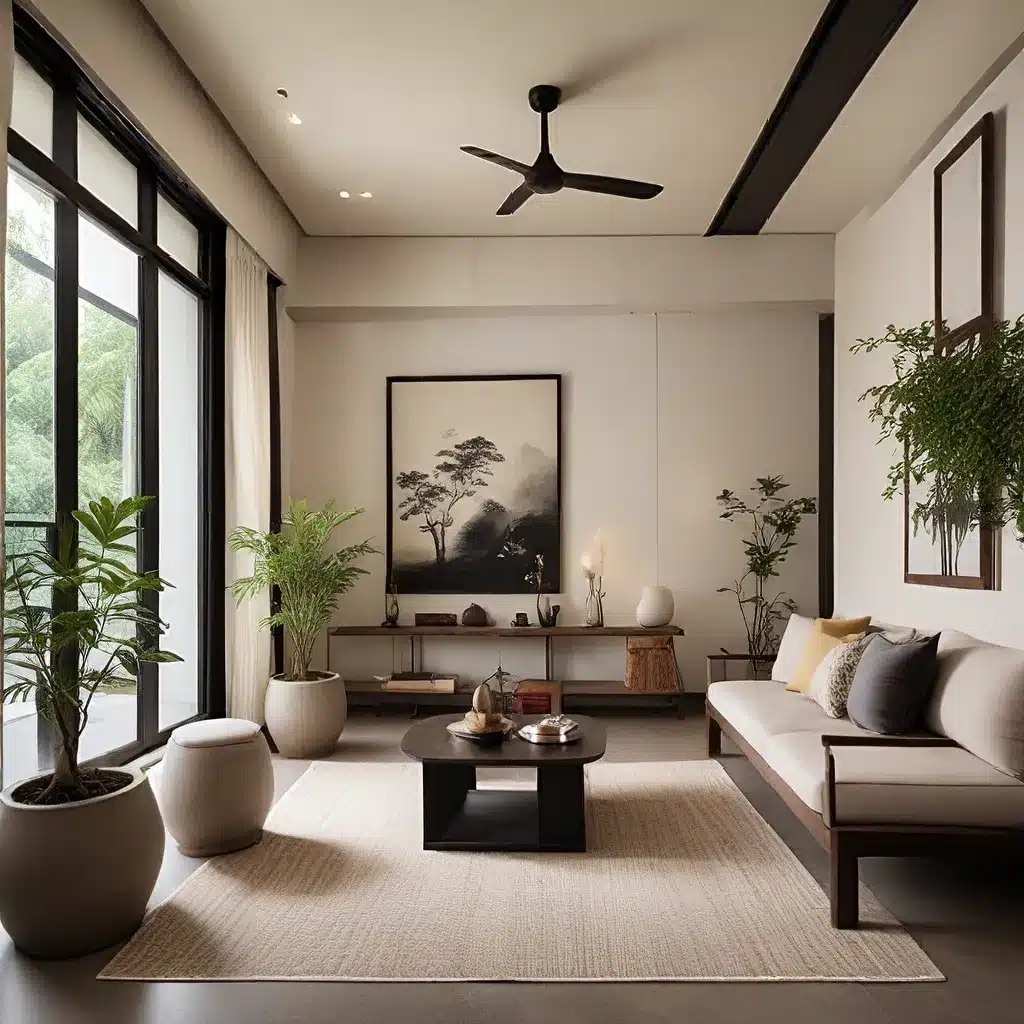
In the ever-evolving landscape of interior design, a new and captivating trend has emerged that seamlessly blends the best of Eastern and Western aesthetics – Japandi. This harmonious fusion, rooted in the timeless traditions of Japan and the cozy minimalism of Scandinavia, has captured the hearts and imaginations of design enthusiasts worldwide.
Unveiling the Origins of Japandi
The story of Japandi begins centuries ago, when the closed-border policy of Japan was lifted in the mid-1850s. This pivotal moment opened the doors for Scandinavian designers and artists to venture into the Land of the Rising Sun, where they were instantly captivated by the country’s rich culture, enchanting items, and refined design sensibilities.
As Scandinavian designers explored Japan, they found striking similarities between the two design movements – a shared appreciation for simplicity, natural materials, and craftsmanship. This discovery laid the groundwork for a harmonious partnership, where the tranquil minimalism of Scandinavia and the wabi-sabi philosophy of Japan coalesced to create a new, harmonious aesthetic.
Defining the Japandi Aesthetic
At its core, Japandi is a marriage of two distinct design languages, each with its own set of defining characteristics. By blending these elements, Japandi interiors evoke a sense of understated elegance and profound connection to the natural world.
Japanese Design Influences:
– Emphasis on simplicity and minimalism
– Reverence for natural materials like wood, stone, and paper
– Incorporation of organic shapes and forms
– Integration of natural light and greenery
– Embrace of the wabi-sabi philosophy, which celebrates the beauty in imperfection
Scandinavian Design Influences:
– Cozy and inviting atmosphere, known as “hygge”
– Reliance on natural materials like wood, linen, and leather
– Muted, neutral color palettes
– Clean, uncluttered spaces
– Focus on functionality and practicality
By blending these distinct design languages, Japandi interiors create a harmonious and serene environment that invites mindful living. The result is a space that is both visually striking and emotionally grounding, where the occupants can find solace and connection with the natural world.
Bringing Japandi into Your Home
If you’re captivated by the Japandi aesthetic and eager to incorporate it into your own living space, there are several key strategies to consider:
-
Embrace Minimalism: One of the foundational principles of Japandi is a less-is-more approach. Begin by decluttering your space, focusing on essential, high-quality pieces that serve both form and function.
-
Opt for Natural Materials: Incorporate natural materials like wood, stone, linen, and bamboo throughout your space. These elements not only add visual interest but also cultivate a soothing, grounding atmosphere.
-
Introduce Organic Shapes: Look for furnishings and decor that feature organic, asymmetrical shapes to balance the clean lines and geometric forms often found in Scandinavian design.
-
Bring the Outdoors In: Strategically place plants, greenery, and natural light throughout your space to foster a seamless connection between the interior and the natural world.
-
Curate Thoughtful Accents: Carefully select handcrafted, artisanal pieces that reflect the Japanese emphasis on craftsmanship and the Scandinavian appreciation for functional beauty.
-
Cultivate Cozy Comfort: Incorporate soft textiles, plush throws, and ambient lighting to create a warm, inviting atmosphere that embodies the Scandinavian concept of hygge.
By following these guidelines, you can transform your living space into a harmonious Japandi oasis – a sanctuary that celebrates the beauty of simplicity, the elegance of natural materials, and the profound connection between the indoor and outdoor worlds.
Unlocking the Benefits of Japandi Design
Beyond the aesthetic appeal, Japandi design offers a wealth of benefits that extend far beyond the realm of interior decor. By embracing this holistic approach to living, homeowners can unlock a deeper sense of well-being and mindfulness.
Mindful Living: The Japandi philosophy encourages a slower, more contemplative way of living, where the focus is on simplicity, quality, and the appreciation of the present moment. This mindset can have a profound impact on one’s overall mental and emotional well-being.
Sustainability: Japandi’s emphasis on natural materials, craftsmanship, and longevity aligns seamlessly with the growing demand for sustainable, eco-friendly design solutions. By investing in Japandi-inspired pieces, homeowners can contribute to a more sustainable future.
Personalized Luxury: While Japandi is often associated with minimalism, it is also a highly personalized and customizable design approach. By collaborating with professional interior designers, homeowners can create a one-of-a-kind living space that reflects their unique preferences and lifestyle.
Timeless Appeal: Unlike fleeting design trends, Japandi has a timeless quality that transcends the confines of fashion and fads. This enduring appeal ensures that your Japandi-inspired home will continue to captivate and inspire for years to come.
As the world continues to seek solace and balance in a rapidly changing landscape, the Japandi design movement stands as a beacon of tranquility and thoughtful living. By embracing this harmonious fusion of Eastern and Western aesthetics, homeowners can create spaces that nourish the soul, soothe the senses, and foster a deeper connection to the natural world.

